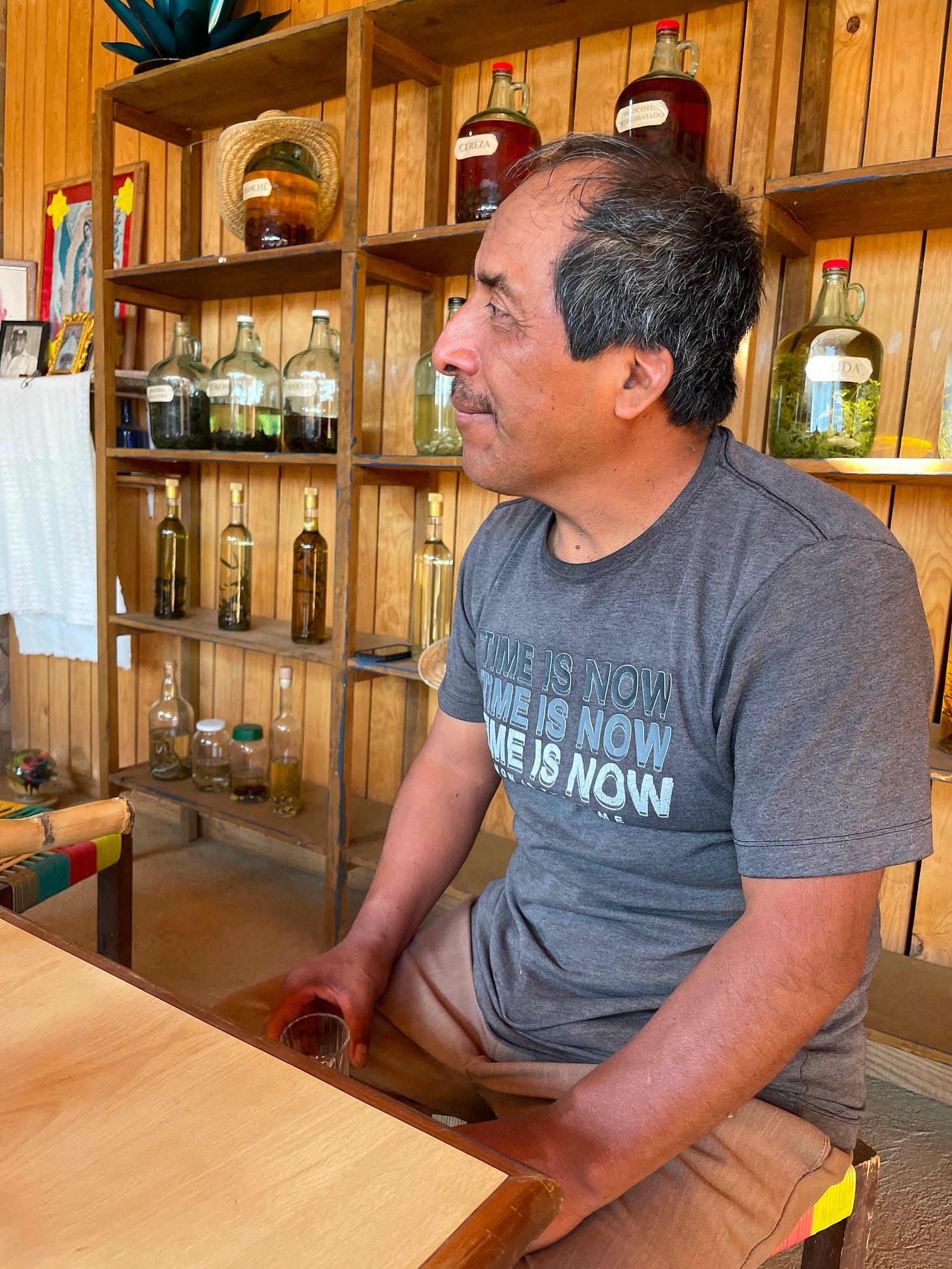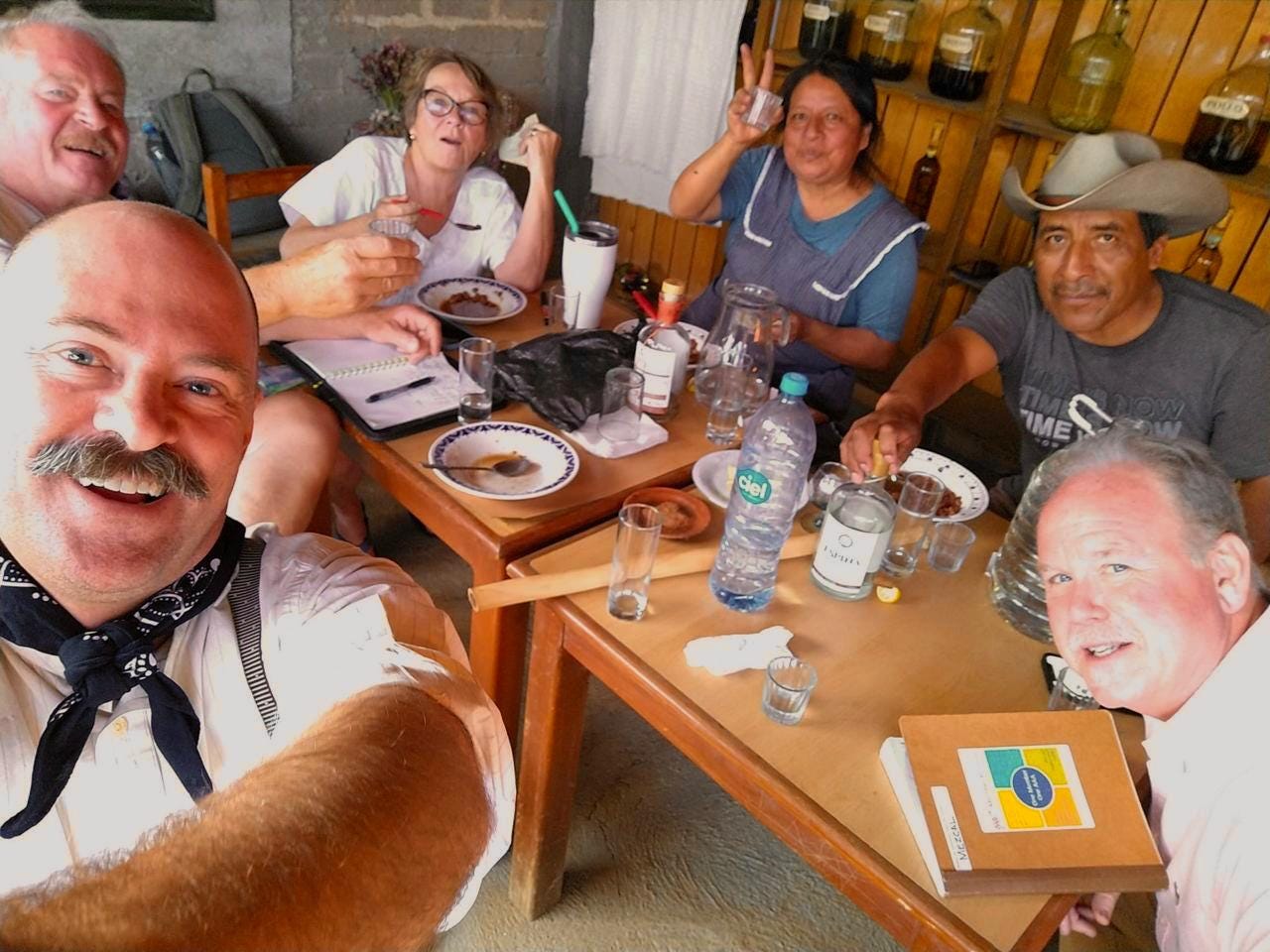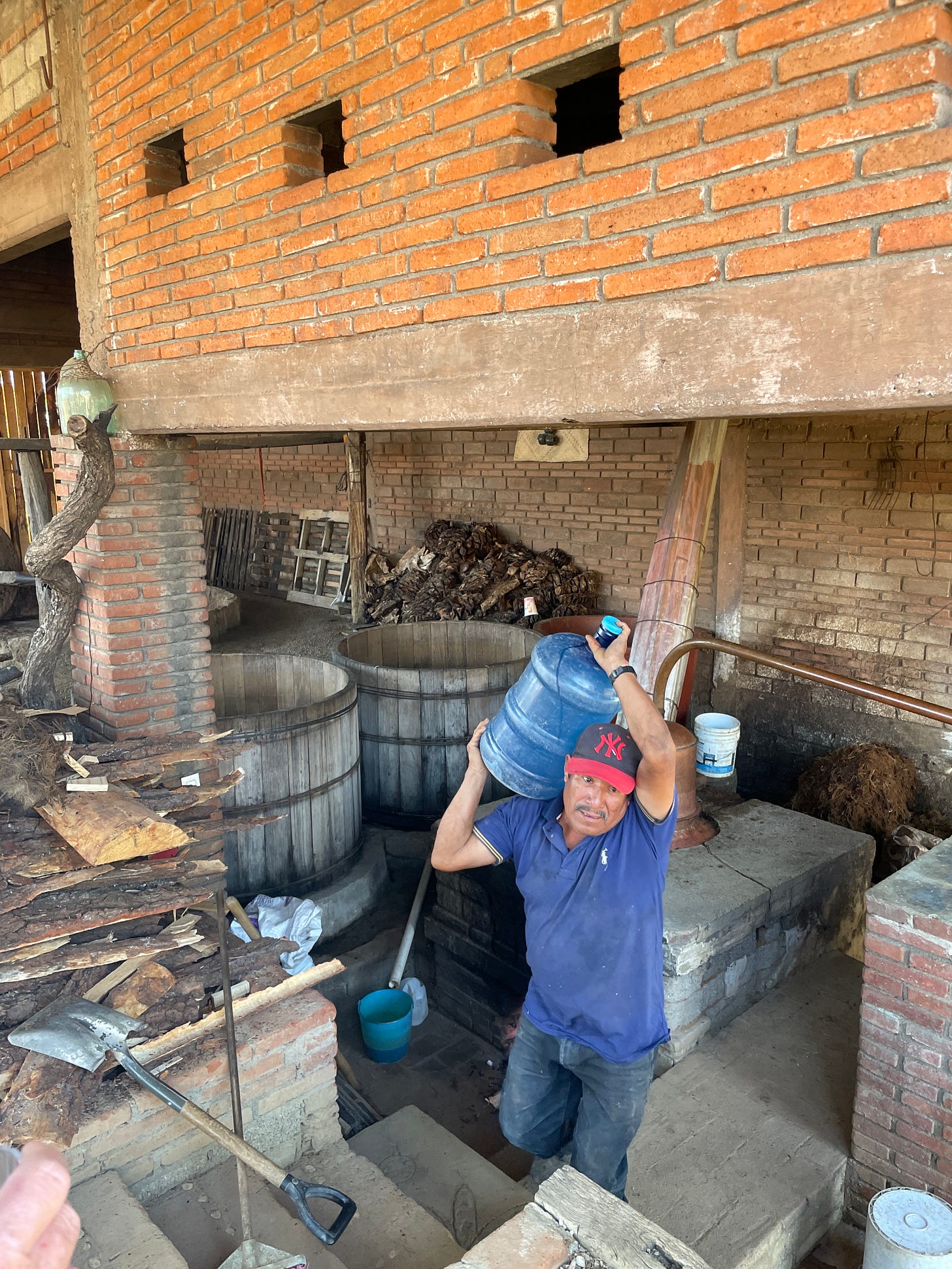Normally on these annual trips, we go to 3 mezcal regions, but this past year we spent two consecutive days in Logoche, so our customary Wednesday trip to see Plácido Hernández of Espina Dorada Mezcal in San Francisco Lachigoló might’ve been something we left for the next year.
Nah!
We’re not getting any younger and we don’t get to Oaxaca so often that we can skip a visit to a maestro mezcalero this exceptional. Plus he, Soledad his wife and Jessica his daughter are lovely hosts.
I recently told a friend that Plácido always has something extraordinarily special every time we go. On our first visit it was a fabulously funky Barril, other times it was an enormous and fruity Tobalá and a certain Tepextate that was somehow only 46%—but with as much classic Tepextate flavor as you could handle. This past year?
Well, Fred was enraptured by his clay distilled Sierra Negra. Me? I couldn’t decide between that year’s Barril or Cuixe. At first they seemed very similar. I savored the Barril, concentrating hard. Then, about the 4th time I did a side-by-side with the two, I noticed something elegant about the Cuixe. For me, sometimes—in addition to the base flavor of a distillation—there comes an additional, subtle flavor “twirl” toward the end. And this one had it! As I focused on the Cuixe, I asked, “Wait; what is that?”
Plácido replied with a smile, “Ahhh, you taste that?”
Yes, I did. There would be no lengthy explanations of just what that twirl was; only an acknowledgment that it was a rare and gorgeous mezcal. So I left with a little garrafon of it. I don’t have much of that beautiful Cuixe left, and I’ve never offered it at an actual tasting. That beauty is for me and a select group of friends. (Oh, and a certain Japanese Mezcal Maniac named Kota who lives in Mexico City. He liked it so much I made an exception for him.)
As I’ve mentioned, Plácido lived 5 years in Los Angeles when he was young, so he speaks English quite well. While my Spanish continues to improve with the help of Carlos Nahum, my local teacher, it’s still great to be able to get explanations and have conversations with this maestro mezcalero in English.
This past year he told me his Espina Dorada palenque had been in operation for 15 years, and every single year we come there is evidence of much growth. The guy keeps building and building! And, although the palenque is far from that of an industrial producer, it’s very well appointed and frequently teeming with energy.
On my first visit to Espina Dorada with amigo Alastair Wilcox, Plácido wasn’t there; so his wife Soledad and their kids treated us to samples. I have noticed over the years that he speaks to his family in the Zapoteco language, which bears no resemblance whatsoever to Spanish. On this visit he elaborated a bit on that well known Zapoteco word deexbee, which apparently means soul or spirit, is a commonly heard toast in Oaxaca. He tells me…
Deexbee [deesh-bay] is the general toast.
Deexbee-o [deesh-bay-oh] is used when toasting a particular person. (Deexbee to you.)
Deexbee-yeh-boo is used when toasting an older person.
While he was counting out what we paid him for the mezcal we purchased that day, I noticed he was doing so in Zapoteco. Here’s how it sounded…
So we got to see Plácido Hernández and his family again last year, and are planning a return trip next week. I’ve no idea what he’ll have; I only know there’ll be something completely smashing as always.
Even if you don’t venture as deep into the Oaxacan campo as we do; that’s fine: Espina Dorada is right there on Highway 190 only about 25 minutes from Oaxaca centro. Go see him for a warm experience and tremendous mezcal!






